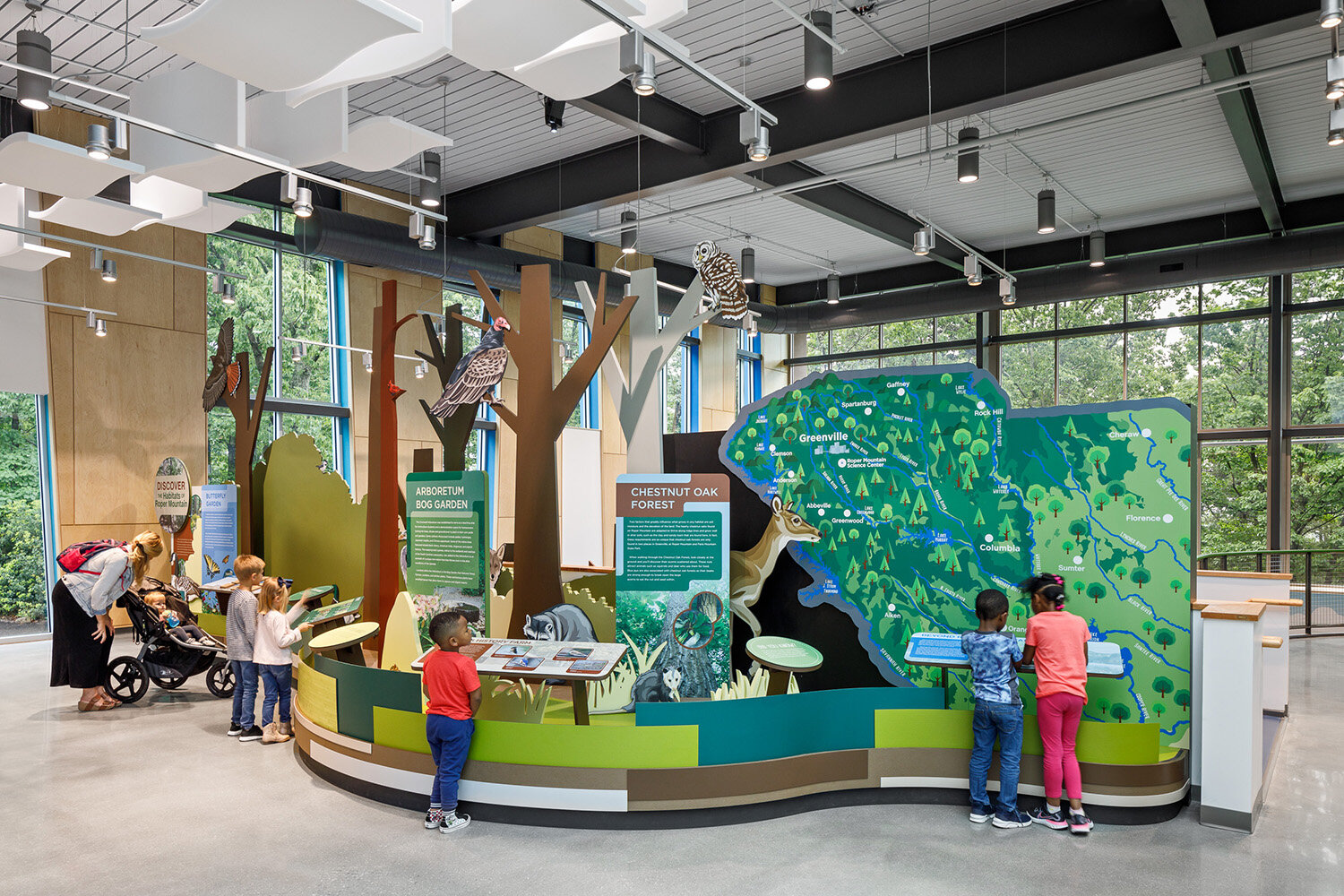ENVIRONMENTAL SCIENCE AND
SUSTAINABILITY CENTER
ROPER MOUNTAIN SCIENCE CENTER
Greenville, SC
The Environmental Science and Sustainability Center at Roper Mountain Science Center (RMSC) embodies the core idea that “together, we can build a sustainable future for our interconnected and dynamic world.” SKOLNICK collaborated with Craig Gaulden Davis on the architectural design for this new center that includes STEAM-based student labs, flexible classrooms, an aquarium, and a teaching kitchen. SKOLNICK also led the exhibit design and concept development for hands-on interactive experiences. Together, the building and its exhibits will enable RMSC to expand their educational programs for South Carolina school children and also welcome families and the general public to discover RMSC’s amazing resources, appreciate Greenville’s natural resources, and empower them to make choices in their everyday lives that make a difference.
Services
Concept Design and Development
Architectural Design
Exhibit Design
Size
28,800 sf
Awards
Honor Award from the Association for Learning Environments
”Addition to a Campus” category
SUSTAINABILITY IN ACTION
Sustainable building features include native landscaping, permeable paving, passive shading, a green roof, and rooftop solar photovoltaic panels. Well-insulated walls and roofs, daylighting, and efficient light fixtures work to minimize the building’s energy demands. Interior details also include a recycled glass reception counter and wooden staircase made from a large chestnut oak that was cut down when the site was cleared for building construction.
IMMERSIVE WATERSHED
At the core of the Center is an immersive multi-level exhibit that describes and visualizes the scientific process of the water cycle through the local Greenville story of the Table Rock watershed. After descending through an abstracted version of Table Rock, modular exhibit stations with hands-on interactives encourage visitors to explore the amazing biodiversity in the watershed, investigate the importance of clean water for the health of the whole watershed, and reflect on how their actions upstream make a difference downstream and in the future.















